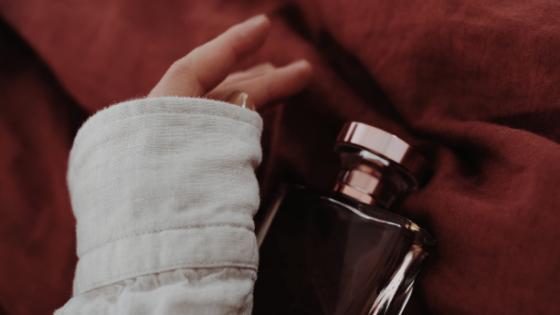
Niche perfumery
Share
From an anthropological point of view, perfumes and smells have always played a fundamental role in the relationship between divinities and man. The perfume, unlike unpleasant smells, is the very symbol of the divinity: in the historical imagination it is «l'

Perfumery has therefore had an intrinsic path to the culture of man since since antiquity. The birth of modern perfumery took place in the 19th century, coinciding with the invention ofsynthetic molecules, until then the creation of a fragrance was an elite concession and the creator was on the same level as a craftsman. At the origin of modern perfumery there is chemistry, the reproducibility and the resulting uniformity .
Thanks to the great use of synthetic molecules, perfumes become more performing and more stable at the expense of losing the dense, rich and soft character of the previous fragrances, the other side of the medaglia is the birth of a new course in perfumery which makes it accessible to many people thus opening up new horizons of creation.
Even historical events are in favor of change: in 1931 the global economic crisis changes the rules, modifying the political scenario, even in France, the homeland of excellence of perfumery: in 1936 the arrival of the popular front leads to the appearance of the first products of mass consumption.
In this context perfumery inevitably transforms, towards the 60s, from elitist and artisananal to popular and industrial.
In the 70s, the main model of the perfumery market was the creation of perfumes under license, thus Van Cleef & Arples
In parallel also the large cosmetics companies such as Estéè Lauder, L'Oréal, Puig, Shiseido or Clarins develop this licensing activity internally.
From now on, numerous perfumes are launched according to an American communication model, which for the economic model of the time is winning and that unfolds more resources in advertising compared to the quality of the essence which becomes 50% cheaper.
Since from the beginning of the 20th century indeed, the fashion houses one by one eclipse the perfumery houses, victorious in a war image where the latter fail to satisfy the needs of product communication that has become essentially visual. France and the United States vie for supremacy on the world perfumery market and only ten groups hold 60% of the market.
Perfumes become essential, launches are plethoric, product life cycles are considerably shortened, taste becomes uniform, perfume is stripped of all its peculiar characteristics of antiquity to approach a culture that has changed and becomes popular, industrial and mediatized.
Out of opposition, or out of simple resistance, new houses of perfumery are born, slowly, starting from the 60s:
These perfume houses are courageous and break the mold and choose not to make use of advertising campaigns and market tests. The perfumes they make are placed in the «Niche» and have sober bottles and names that evoke the raw materials: perfumes must self-promote thanks to their strong identity, in this sense a great meaning is imprinted on the chosen name, which it is the first element of product communication. The name of the niche perfume cannot be banal orusual but must attract attention and arouse curiosity: Mûre et Musc, Thé puor un été, Ambre Sultan, Tubéreuse Crimelle.

The places to purchase this type of product are not the large shopping centres, but the small perfumeries where customers do not happen by chance, but arrive there thanks to word of mouth and personal research which denotes a clear passion for the sector.
Referring to ancient perfumery, prior to the mass market,they suggest the implicit return to authenticity to a certain savoir faire; to a creativity that will not be hindered by the imperatives of earnings and to respect the traditions inherited from the past.
Following the audacity of these founding houses, many others will be created, each choosing its own positioning: elitist and literary for Frédèric Malle , transgressive and colorful for État libre d'Orange, minimalist and urban for Le Labo . This split of the market brings out a new economic model, a break with the absolute domination of the giants of the past.
Once the power of this phenomenon is understood the big fashion houses will put an expert at the center of their perfumery sector, such as Hermès who hires in 2004 a perfume composer as director of fragrance creation or LVMH which in 2006 hires a nose for the brand Dior, in 2008 for Guerlain and in 2011 for Louis Vuitton.
At this point, the number of launches of Niche perfumery exceeds the number of launches of other brands in 2016, raising the question of their positioning on the market, which all authors now define as saturated.
![]()

Dr. Federica D'Incà - COSMAST Master in Cosmetic Science and Technology
“Every woman has the right to be beautiful” - Elizabeth Arden
